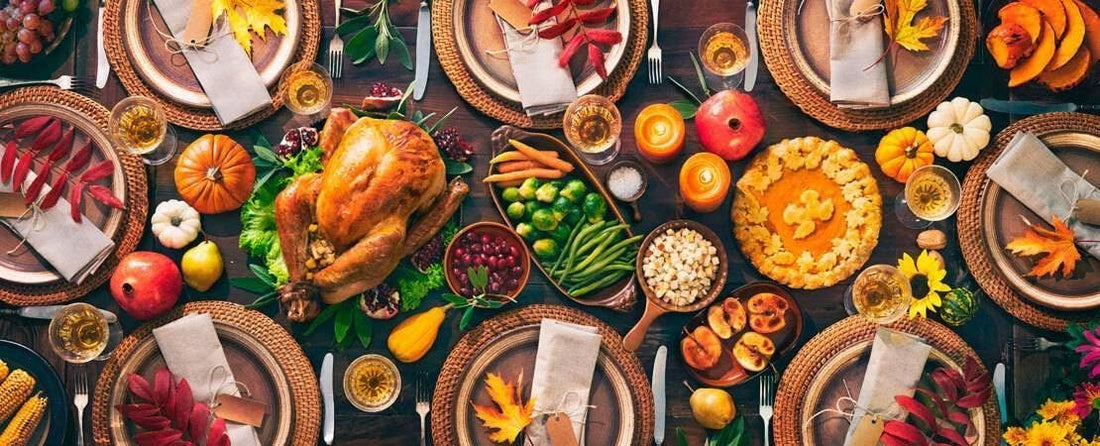
Grow Thanksgiving Vegetables
Share
Grow a Thanksgiving Feast from Your Garden
Thanksgiving is a time to gather, reflect, and give thanks, and one of the most meaningful ways to celebrate is by growing the very vegetables that will grace your table. Harvest celebrations are timeless, with different cultures worldwide marking the end of the growing season with a feast. The tradition extends back thousands of years, long before the pilgrims landed at Plymouth, with Native Americans and communities across the globe celebrating the bounty of the earth.
If you’re looking to bring a homegrown touch to your Thanksgiving feast, there’s still time to plant, grow, and prepare a spread from your own garden. You can celebrate your own harvest this year, providing most of your Thanksgiving vegetables from your own garden. No matter when you start, there are are plenty of cool-season veggies that you can harvest for Thanksgiving.
Quick-Growing Crops for a Thanksgiving Harvest
Even if Thanksgiving is only weeks away, there are several fast-growing, cool-season crops that you can plant now for a fresh harvest by the holiday. These crops are resilient, thrive in cooler weather, and mature quickly, making them perfect for an autumn planting.
Beets
Beets are a versatile addition to any Thanksgiving meal. Roasted, boiled, or served in a salad, they bring a natural sweetness to your plate. Plant your beets now, and in just over 70 days, they’ll be ready to harvest.
Broccoli
Perfect for roasting or adding to casseroles, broccoli matures in about 60 days. With its high tolerance for cooler weather, it can be a sturdy and tasty side for your Thanksgiving feast.
Lettuce Varieties
Leafy greens are always a hit, whether as a fresh side salad or as garnishes. Most lettuces mature in around 60 days and are resilient to cooler fall temperatures. Try romaine, butterhead, or loose-leaf varieties for a range of textures and flavors.
Cabbage
Whether you’re planning a slaw, stir-fry, or stuffed cabbage dish, cabbage is ready in about 60 days and adds a fresh, crisp texture to your spread.
Peas
Fresh peas are an easy-to-grow favorite that adds a burst of sweetness to your dishes. Try adding them to salads, casseroles, or even as a side with a bit of butter. They’ll be ready to pick in about 65 days.
You can get the seeds now and have all these vegetables for the holiday. And if you’ve planted any squash and pumpkins they should be ready by the end of October or beginning of November. There are also a few things you can do to extend the lives of your other garden plants into the fall.
So, plant now and harvest for Thanksgiving. Share your bounty with your family and friends.
Maximizing Your Existing Garden Bounty
If you’ve already planted squash, pumpkins, or other late-summer vegetables, they’re likely to be ready for harvest in late October or early November—just in time for Thanksgiving! These classic fall favorites make perfect additions to a holiday table, from mashed and roasted squashes to pumpkin pies and soups.
Consider these tips to get the most out of your existing garden plants and extend their harvest into the Thanksgiving season:
-
Use Row Covers or Cold Frames
Protect plants like broccoli, peas, and lettuce from early frosts by adding row covers or cold frames. This will extend their growing period, keeping them fresh and harvest-ready longer. -
Harvest Selectively
For lettuces and other leafy greens, try harvesting outer leaves as they mature rather than pulling up the whole plant. This technique encourages new growth, giving you more to enjoy over several weeks. -
Store Squash and Pumpkins Properly
Squash and pumpkins are typically ready for harvest in late October and, when cured and stored properly, will last through Thanksgiving. Store them in a cool, dry place away from direct sunlight to keep them fresh for weeks.
Planning Your Garden for Thanksgiving Next Year
If Thanksgiving gardening is inspiring you this year, plan ahead for next season! Think about incorporating both quick-growing fall crops and longer-maturing varieties like carrots, parsnips, and winter squash in your garden next year. Planting in succession through late summer and early fall will allow you to have a range of vegetables ready by the holiday.